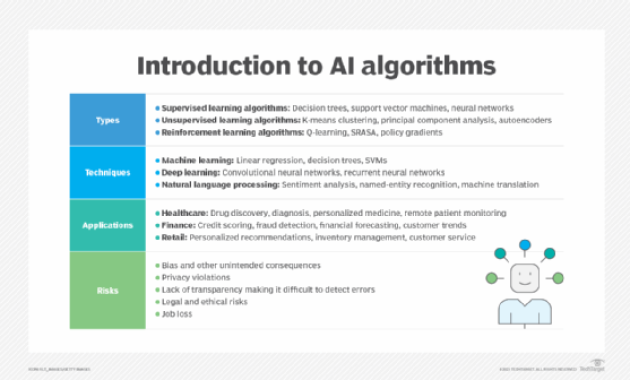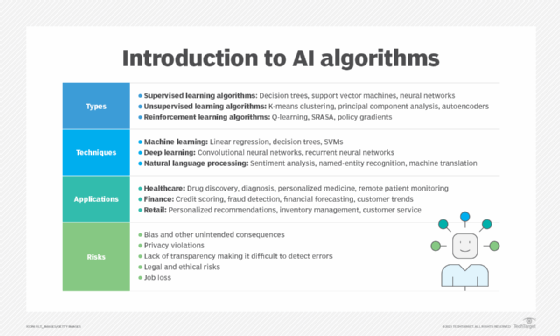
Business Intelligence Tools That Improve Algorithms: A Deep Dive
In today’s data-driven world, the ability to analyze and interpret information is paramount. Businesses across all sectors are leveraging the power of data to make informed decisions, optimize operations, and gain a competitive edge. At the heart of this transformation lies the convergence of business intelligence tools that improve algorithms. These tools are no longer just about reporting; they are about predictive analytics, machine learning, and real-time insights. This article provides an in-depth exploration of how these powerful tools are reshaping the landscape of data analysis and algorithmic efficiency.
The Evolving Role of Business Intelligence
The evolution of business intelligence (BI) has been nothing short of remarkable. Initially, BI focused on generating reports and providing a historical view of business performance. However, as data volumes exploded and computational capabilities advanced, BI tools began to incorporate more sophisticated analytical features. Today’s BI platforms are designed to handle massive datasets, integrate with various data sources, and deliver actionable insights in real-time. This shift has paved the way for the integration of advanced algorithms, enabling businesses to uncover hidden patterns and predict future trends.
How Business Intelligence Tools Enhance Algorithms
Business intelligence tools play a pivotal role in improving algorithms in several key ways:
- Data Preprocessing and Cleaning: Algorithms are only as good as the data they are trained on. BI tools excel at data preprocessing, including cleaning, transforming, and preparing data for algorithmic analysis. This ensures that the algorithms receive high-quality, reliable data, leading to more accurate and insightful results.
- Feature Engineering: BI tools can help identify and create relevant features from raw data. Feature engineering is a crucial step in algorithm development, as it can significantly impact the performance and predictive power of models.
- Algorithm Selection and Tuning: Many BI platforms offer a range of pre-built algorithms or allow users to integrate custom algorithms. These tools also provide features for algorithm tuning, enabling businesses to optimize the performance of their models for specific use cases.
- Model Monitoring and Management: Once algorithms are deployed, BI tools can monitor their performance, track key metrics, and provide alerts when performance degrades. This allows businesses to proactively address issues and ensure that their algorithms remain accurate and relevant.
- Real-time Insights and Automation: Modern business intelligence tools offer real-time data integration and automated analysis capabilities. This enables organizations to make faster, more informed decisions. Automated algorithms can respond to changes in data.
Key Business Intelligence Tools for Algorithmic Improvement
Several business intelligence tools are particularly well-suited for improving algorithms. These tools offer a combination of data integration, advanced analytics, and machine learning capabilities.
Tableau
Tableau is a leading business intelligence tool known for its intuitive interface and powerful data visualization capabilities. It allows users to connect to a wide variety of data sources, create interactive dashboards, and perform advanced analytics. Tableau’s integration with machine learning models enables businesses to incorporate predictive insights into their dashboards and reports. It excels in helping users understand the output of algorithms.
Microsoft Power BI
Microsoft Power BI is another popular BI platform that offers a comprehensive set of features for data analysis and visualization. Power BI integrates seamlessly with other Microsoft products, making it a natural choice for organizations already invested in the Microsoft ecosystem. It provides a range of pre-built machine learning models and allows users to build custom models using Azure Machine Learning. Power BI helps businesses to deploy and monitor algorithms.
Qlik Sense
Qlik Sense is a data visualization and business intelligence tool that uses an associative data model. This allows users to explore data from multiple angles and uncover hidden relationships. Qlik Sense offers a range of advanced analytics capabilities, including machine learning integration. It is designed to foster collaboration and enable data-driven decision-making.
Looker
Looker is a business intelligence tool designed for data-driven decision-making. It is known for its data modeling capabilities and its ability to create a single source of truth for data across an organization. Looker integrates with various data warehouses and supports advanced analytics and machine learning. It is a good choice for businesses that need robust data governance.
Sisense
Sisense is a complete business intelligence tool that enables organizations to build and embed analytics. It offers a unique approach to data analysis by delivering insights directly where decisions are made. Sisense provides powerful data preparation, analytics, and visualization capabilities. It is well-suited for embedded analytics applications.
Examples of Algorithmic Improvement Through Business Intelligence Tools
The synergy between business intelligence tools and algorithms is evident in various industries:
- Retail: Retailers use BI tools to analyze customer purchase data, identify buying patterns, and personalize product recommendations. This helps to improve algorithms that drive targeted advertising.
- Finance: Financial institutions leverage BI tools to detect fraud, assess credit risk, and optimize investment strategies. This enhances the algorithms that govern financial transactions and risk management.
- Healthcare: Healthcare providers utilize BI tools to analyze patient data, predict disease outbreaks, and improve treatment outcomes. This helps to refine algorithms used in diagnosis and treatment planning.
- Manufacturing: Manufacturers use BI tools to optimize production processes, predict equipment failures, and improve supply chain efficiency. This improves algorithms related to predictive maintenance and resource allocation.
Challenges and Considerations
While business intelligence tools offer significant advantages, there are also challenges to consider:
- Data Quality: The accuracy of algorithmic insights depends on the quality of the underlying data. Ensuring data accuracy, completeness, and consistency is crucial.
- Algorithm Complexity: Implementing and managing complex algorithms can require specialized expertise. Businesses may need to invest in data scientists and analysts.
- Data Security and Privacy: Protecting sensitive data is paramount. Organizations must adhere to data privacy regulations and implement robust security measures.
- Integration and Compatibility: Integrating BI tools with existing systems and data sources can be complex. Organizations need to ensure compatibility and seamless data flow.
Future Trends in Business Intelligence and Algorithms
The future of business intelligence and algorithms is bright. Several trends are poised to shape the landscape:
- Artificial Intelligence (AI) and Machine Learning: AI and machine learning will continue to play an increasingly important role. BI tools will become even more sophisticated, incorporating advanced AI capabilities.
- Automation: Automation will become more prevalent. BI tools will automate data preparation, analysis, and reporting tasks.
- Cloud-Based Solutions: Cloud-based BI solutions will become more popular, offering greater scalability and flexibility.
- Data Democratization: Organizations will focus on making data accessible to everyone. This will empower more employees to make data-driven decisions.
Conclusion: Harnessing the Power of Business Intelligence Tools
Business intelligence tools that improve algorithms are essential for businesses seeking to thrive in today’s data-driven environment. By leveraging these tools, organizations can gain a deeper understanding of their data, optimize their algorithms, and make more informed decisions. As technology continues to evolve, the integration of BI and algorithmic capabilities will become even more critical. Businesses must embrace these tools to stay competitive and unlock the full potential of their data. The future of data analysis lies in the strategic combination of business intelligence and advanced algorithmic capabilities, ensuring that organizations can make the most of their data assets and achieve their business objectives. [See also: Related Article Titles]

